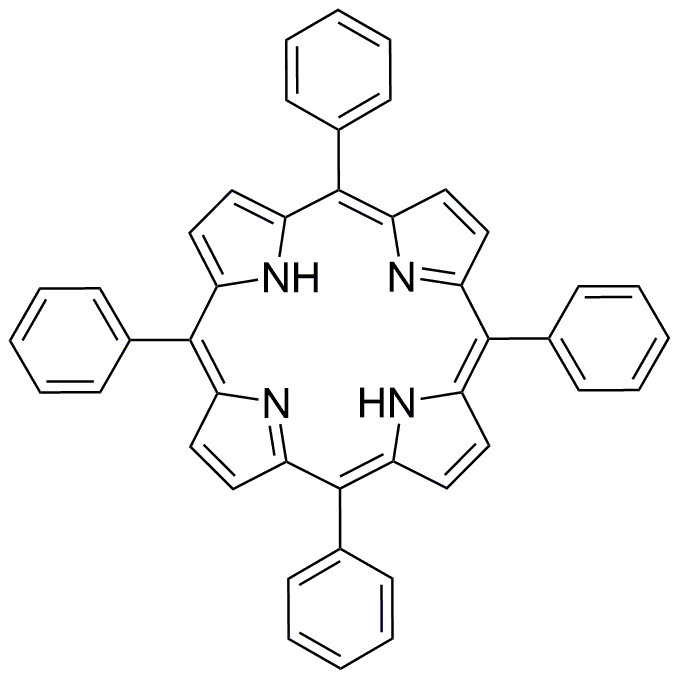meso-Tetraphenylchlorin is widely utilized in research focused on
- Photodynamic Therapy: This compound is effective in treating certain cancers by generating reactive oxygen species when exposed to light, making it a promising agent in cancer treatment.
- Solar Energy Conversion: It plays a role in organic photovoltaics, enhancing the efficiency of solar cells by improving light absorption and energy conversion.
- Fluorescent Probes: Used in biological imaging, it helps researchers visualize cellular processes due to its strong fluorescence properties, aiding in the study of live cells.
- Organic Synthesis: Acts as a reagent in various organic reactions, facilitating the synthesis of complex molecules in pharmaceutical development.
- Environmental Monitoring: Its ability to detect and quantify pollutants makes it valuable in environmental science, particularly in assessing water quality.
General Information
Properties
Safety and Regulations
Applications
meso-Tetraphenylchlorin is widely utilized in research focused on
- Photodynamic Therapy: This compound is effective in treating certain cancers by generating reactive oxygen species when exposed to light, making it a promising agent in cancer treatment.
- Solar Energy Conversion: It plays a role in organic photovoltaics, enhancing the efficiency of solar cells by improving light absorption and energy conversion.
- Fluorescent Probes: Used in biological imaging, it helps researchers visualize cellular processes due to its strong fluorescence properties, aiding in the study of live cells.
- Organic Synthesis: Acts as a reagent in various organic reactions, facilitating the synthesis of complex molecules in pharmaceutical development.
- Environmental Monitoring: Its ability to detect and quantify pollutants makes it valuable in environmental science, particularly in assessing water quality.
Documents
Safety Data Sheets (SDS)
The SDS provides comprehensive safety information on handling, storage, and disposal of the product.
Product Specification (PS)
The PS provides a comprehensive breakdown of the product’s properties, including chemical composition, physical state, purity, and storage requirements. It also details acceptable quality ranges and the product's intended applications.
Certificates of Analysis (COA)
Search for Certificates of Analysis (COA) by entering the products Lot Number. Lot and Batch Numbers can be found on a product’s label following the words ‘Lot’ or ‘Batch’.
*Catalog Number
*Lot Number
Certificates Of Origin (COO)
This COO confirms the country where the product was manufactured, and also details the materials and components used in it and whether it is derived from natural, synthetic, or other specific sources. This certificate may be required for customs, trade, and regulatory compliance.
*Catalog Number
*Lot Number
Safety Data Sheets (SDS)
The SDS provides comprehensive safety information on handling, storage, and disposal of the product.
DownloadProduct Specification (PS)
The PS provides a comprehensive breakdown of the product’s properties, including chemical composition, physical state, purity, and storage requirements. It also details acceptable quality ranges and the product's intended applications.
DownloadCertificates of Analysis (COA)
Search for Certificates of Analysis (COA) by entering the products Lot Number. Lot and Batch Numbers can be found on a product’s label following the words ‘Lot’ or ‘Batch’.
*Catalog Number
*Lot Number
Certificates Of Origin (COO)
This COO confirms the country where the product was manufactured, and also details the materials and components used in it and whether it is derived from natural, synthetic, or other specific sources. This certificate may be required for customs, trade, and regulatory compliance.


